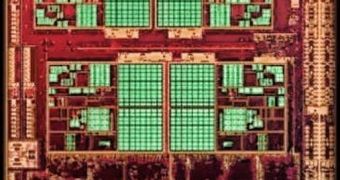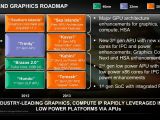AMD has been quite on a roll lately. Its Trinity APUs are probably the best mobile solution for notebooks in thin & light mobile systems. Trinity is also the best suited office and all-in-one (AIO) processing solution and it’s the best way to go for casual gamers.
The next move is Kaveri. This APU architecture is quite a bit different from today’s Trinity.
We might say that Richland, as this is reportedly the codename for these new APUs, is 90% different from Trinity.
There will be a new x86 processing architecture called SteamRoller that will replace today’s Piledriver. This is another evolutionary step from Piledriver, just like Piledriver was an evolutionary step from Bulldozer.
The graphics processing core will be based on today’s powerful GCN architecture, instead of the VLIW4 design currently inside Trinity.
The way memory and cache are accessed will be radically different, and the manufacturing process is also moving from 32nm SOI to 28nm bulk.
One thing that stood in the way of enthusiastic adoption was the lack of a long-lasting platform that would be able to house at least one more generation of APUs.
It was quite a disappointment to find out that FM1 motherboards wouldn’t support Trinity processors, but the Kaveri-based Richland will fit nicely into the same FM2 sockets we have today.
Richland will benefit from a 4 MB truly unified cache and will come with the same number of graphic processing cores, but these 384 cores will be using the GPU-compute enhanced architecture called GCN.
The usual suspects are also there, as Richland will support dual/hybrid graphics, AMD Turbo Core, Blu-ray 3D, AMD –V, UVD 3.2, Microsoft’s Direct compute and OpenCL.

 14 DAY TRIAL //
14 DAY TRIAL // 
